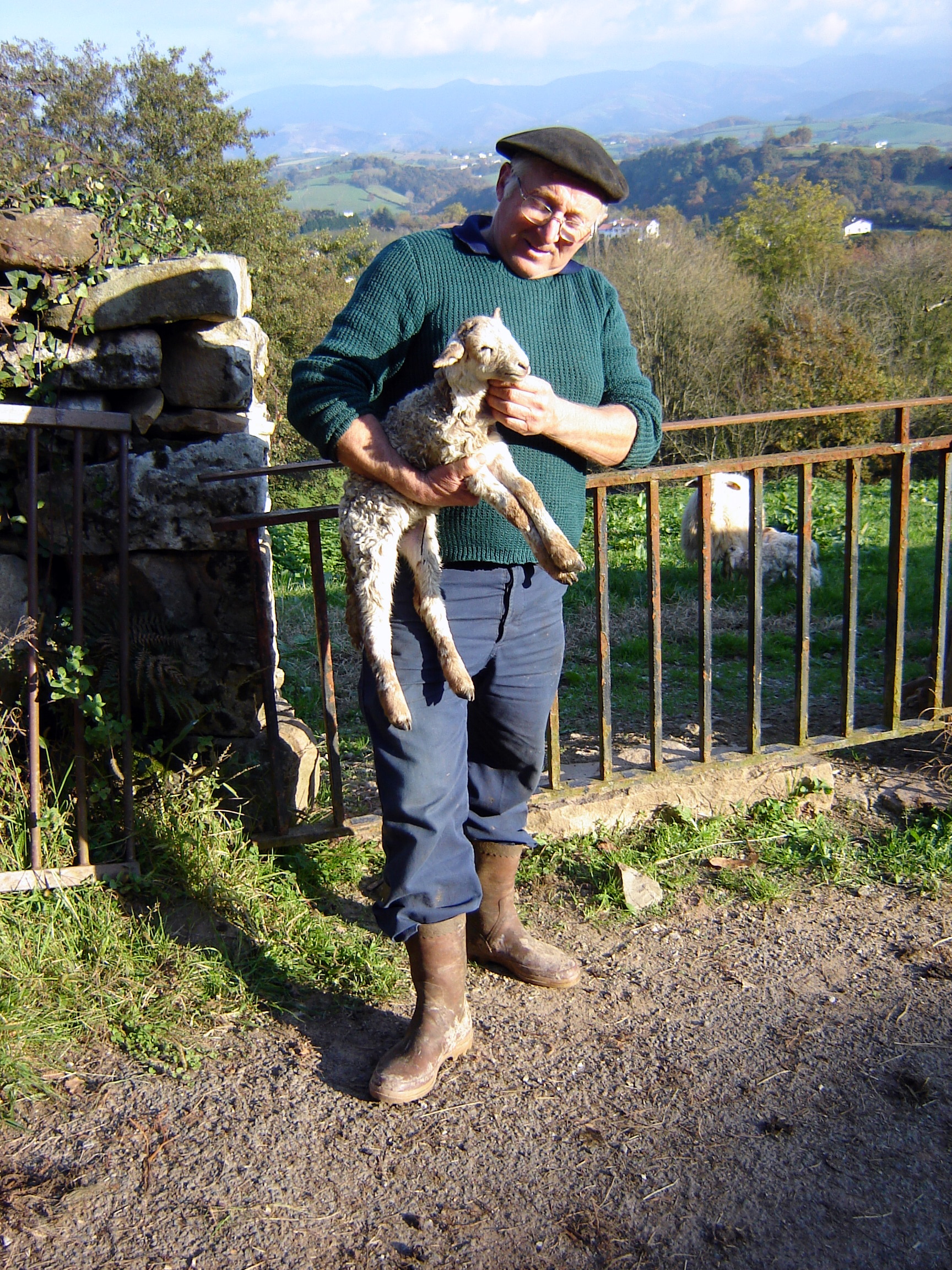Basque ethnography at a glance
Sheep-breeding was in full swing in the last decades of the 19th century. A newly created Ministry of Agriculture was responsible for developing the sector. It was then that the identification of local breeds started.
Although by the beginning of the 20th century a large portion of the summer pastures in Lapurdi had fallen into disuse, the construction of sheepfolds (ardi-bordak) never ceased, so for a time, shepherding activities in the commons coexisted with traditional summer grazing. According to customs data, the area of Sara, subject of study by J.M de Barandiaran (Bosquejo etnográfico de Sara [Ethnographic sketch of Sara]), boasted some 7000 sheep, ten times less pigs, and five times less cattle. Each farmstead, often housing up to three generations, counted with at least a sheepfold and a shepherd’s hut (etxola) on mountain grounds.
The dairy industry grew exponentially in the 1960s in response to the demand of the major Roquefort enterprise, which later became self-sufficient and independent. Milk production experienced an overall increase under the supervision of the Ossau-Iraty Pyrenean sheep’s cheese (to gain Controlled Designation of Origin —CDO— in 1980). Such production was in turn accompanied by the exploitation of quality-branded sheep meat. As we know, this type of mercantile processes tends to be promoted by the industrial interests at stake.
Four sheep breeds are reared in the Northern Basque Country: the basco-béarnaise, mainly in the Zuberoa region; the black-headed (muturbeltza) manex of beautiful horns, predominant in Garazi, is an ancient breed of unknown origin; and the red-headed (muturgorria) manex, ever more widespread to the detriment of its smaller red-headed (muturgorri ttipia) relative known as sasi-ardia. All these species remain under study and selection. The sector suffers a substantial decline following agricultural development of the lowlands and disappearance of the shepherd’s way of life, among other causes, and local varieties compete with the lacaune, a real milk-making machine, imported and not suited to survive in our mountains (for they are vulnerable to ticks…).
The sasi-ardia is undeniably the most fragile of all four breeds. This small, lively, rustic looking ruminant, with or without horns, has little short ears, a triangular head, and long, predominantly white wool. It is raised for meat and milks poorly. A primitive, very resilient, and recognized native breed, it abounded in 1960s Lapurdi. Characterized by a limited herd behaviour, it grazes middle-mountain bushes, moors, woods and underwoods, hence its name (sasi is Basque for “bush”). Together with the pottoka, it participates in the preservation of our living environment and landscape stabilisation.
Barely around a thousand heads are found today. The denomination is protected by the Sasi Artalde Association, founded in 2014. Helped by the Agricultural Chamber of the Basque Country —Euskal Herriko Laborantza Ganbara (EHLG)— and the Centre for the Conservation of Breeds of Aquitaine —Conservatoire des Races d’Aquitaine—, and by ministerial decree, in April 2016 it was awarded the official recognition of local breed in danger of extinction.
Michel Duvert – Etniker Iparralde – Etniker Euskalerria Groups
Translated by Jaione Bilbao – Language Department – Labayru Fundazioa
References for further information: Cachenaut, A. Enbata (2006 & 2011), no. 1955, 1956; Euskal Herriko Laborantza Ganbara. Izar Lorea & Les cahiers techniques de EHLG, no. 1 & 2, 2014-2016; GIS. Recherche sur les ovins lait des Pyrénées-Atlantiques.



